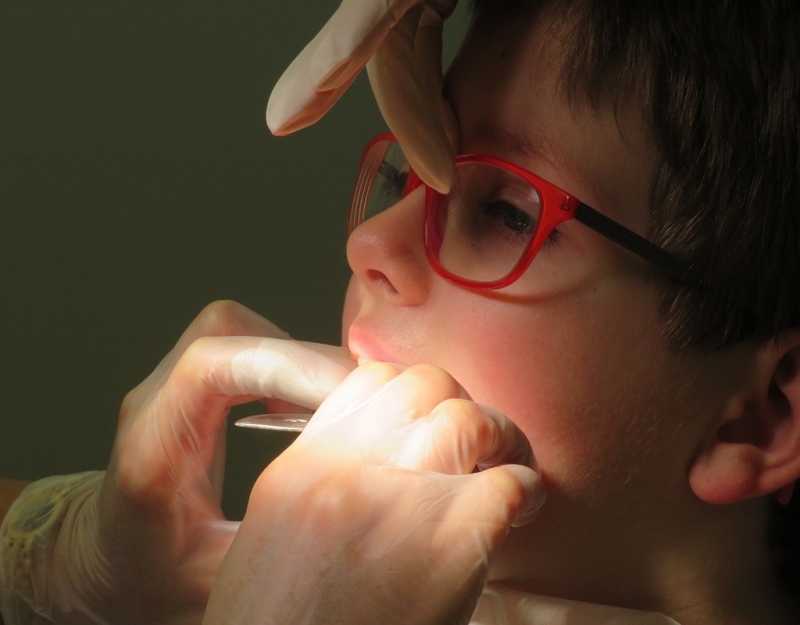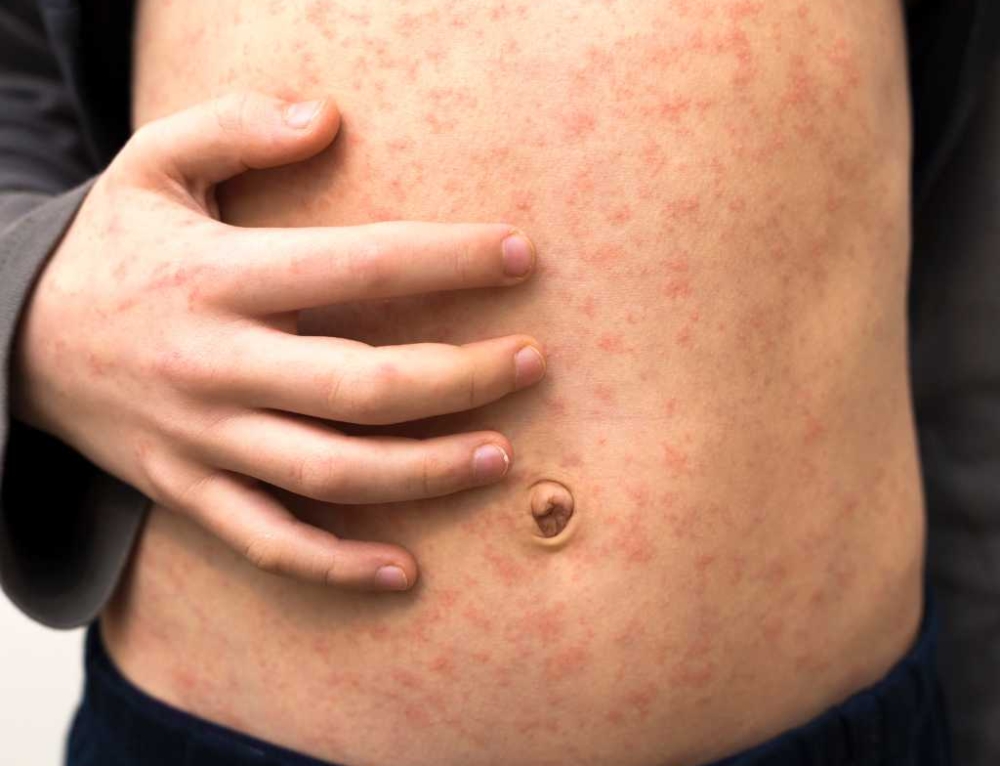Kidspot fans had the opportunity to engage with specialist paediatric dentist, Amy Goodwin, in a Live Q&A session. Find out more about looking after the dental health of your children in our round up of the topics discussed.
Please note: The answers provided are for information only and are not a substitute for professional dental advice or treatment for specific dental conditions. Please contact your professional dental healthcare provider if you have specific questions about any dental matters.
Q: My kids love their electric toothbrushes, but are they just a novelty or do they really clean the teeth better? (Julie S)
A: Electric toothbrushes are often easier for parents to use on their children than a manual toothbrush. Easier does not mean better. Because the head moves, you do not have to worry about moving the toothbrush in small circles or little back-and-forth motions. BUT – you still need to hold the toothbrush at a 45 degree angle towards the gums when brushing the sides of the teeth. You should see the bristles massaging down into the gums while brushing these surfaces. A small enough head and soft bristles are still essential on electric toothbrush. In summary, you can clean the teeth just as well with a manual toothbrush, but many parents find an electric toothbrush easier to handle.
Q: My daughter had an adult tooth come up way behind the baby tooth and out of line with the rest of her teeth. Will she definitely need braces later on? (Kym M)
A: It is normal for the bottom four adult teeth to come up behind the baby teeth. Over time, usually a few months, the baby tooth starts to get loose and falls out. Then, normal pressure from the tongue at rest will push the adult tooth forward into the space. Depending on the size of your child’s adult tooth and the size of their jaw will determine if the teeth will straighten up on their own or not. Please also keep in mind that almost no one “needs” braces. Orthodontics is mostly for cosmetic purposes – no one ever died of a crooked tooth. However, it is much easier to clean the teeth when they are straight and can be a huge boost to self-esteem at a critical time in a child’s life.
Q: Can you explain what fine verticle cracking on teeth is from? Is it because there is a deficiency? (Gill W)
A: No, this is not usually due to any deficiency or problem with the enamel. This is a normal finding in the enamel, often also called “microfractures” or “craze lines.” These develop over time in many teeth, some quicker and more prominent than other teeth. The small cracks are due to force – whether from trauma or eating. To minimize the development of these cracks, avoid using your teeth to “break” anything, do not chew on ice, and in general just be gentle when eating – no need to bite down too forcefully. Another possible cause of the craze lines is bruxism (grinding your teeth) or a habit such as biting your nails. The good news is that craze lines are just a cosmetic concern, especially when these areas stain and become discoloured. These vertical lines do not make it more likely that your tooth will crack.
Q: My 7 year old is getting big molars down the back of her mouth. She is saying it hurts because she is biting the inside of her cheek at the back where they are coming through. Is there anything I can do to help her? (Melissa F)
A: Yes, there is! Simply give your child over-the-counter pain medication such as ibuprofen (nurofen). Ibuprofen usually works better than paracetamol (panadol) at controlling pain and it also reduces inflammation. Do not give your child an oral gel to rub on the gums – this rubs off too easily and is swallowed. If you would like to avoid medication, give her cold water to drink or something cold to place on the gums.
Q: She has also recently lost her 2 top front teeth and she is a thumb sucker! Is it true that this can give her buck teeth? I’ve tried pretty much everything to get her to stop but it’s nearly impossible and I’m stressing she’s going to need braces when she’s older to fix it!
A: Yes, you are correct that thumb-sucking can give your child “buck” teeth, especially when the habit has continued when adult teeth have started coming in. I would check out “thumbusters” and see if it may be a good option for you; this specific appliance worn on the thumb or fingers needs to be worn 24-7, so best to be done during a long school holiday! Another option is for her dentist to make an appliance that is glued into her mouth and will prevent her from getting her thumb in her “happy spot.” Beware that an appliance should never be placed in a child’s mouth if they are not ready to stop. If your child does not want to stop, the appliance will not be successful and can cause more harm than good.
Q: I have noticed white splotches on my 9 month olds teeth. Are these anything to worry about? Also, he seems to have chipped the outside corners of his two top middle teeth – I have no idea how! Do I need to do anything? Is this common? (Sandra D)
A: I would not worry about the chips at all. These look like minor enamel fractures and we usually recommend no treatment at all. Sometimes we smooth out any sharp edges if your son is cutting his lip or tongue on his broken tooth. As for the white spots, I cannot see them very well in the photo, but often white spots are the first stage of a cavity. That is the bad news. The good news is that you can stop the progression before the enamel actually breaks down into a hole/cavity. I would advise making an appointment with your closest paediatric dentist so your son can have a full exam and we can discuss specific dietary and oral hygiene habits that may have led to the white spots forming. Once we know what caused the white spots (maybe not brushing, maybe not using toopthpaste with fluoride, maybe going to bed at night with a bottle, maybe too much juice, etc.) we know what we can do to stop them from getting worse.
Q: When I went to Plunket last week, they called a local dental nurse who said that he had probably been exposed to Fluoride early on? Our water is not fluoridated but we use a fluoride kids toothpaste. And how would I stop the progression of a cavity? Are some kids just prone? It’s not like he has a high sugar diet!
A: It is very unlikely that the white spots on the teeth are due to too much fluoride. Fluorosis rarely shows up on the baby teeth and is more a problem with high fluoride exposure for many years, and often affects the adult front teeth.
There are certain factors that can predispose a child to get cavities, but 95% of the problem has to do with environmental factors that you can control. Continue to brush your child’s teeth with fluoridated toothpaste twice a day, using only a smear (size of a grain of rice) that you rub down into the bristles before brushing. Be sure your child does not go to bed with breastmilk or formula or any food/drink at all on the teeth. Almost everything except water has sugar in it and will lead to cavities. Also, avoid fruit juice as much as possible – even if you water it down, it makes no difference as far as cavities are concerned.
Q: My son has tried flossing but finds it really difficult to get to grips with it. Are there any tips for making it easier for kids? (Anon)
A: If your child is younger than 8 years old, they do not have the manual dexterity to properly floss yet. This means that you need to floss for them. Once your child reaches the age of 8, they may be able to master using a flossette, but they will not be able to master using a regular piece of floss until age 11-12.
Here are some different ways you can floss your child’s teeth:
1. Use around 45cm of floss – or whatever length allows you to wind the floss around both middle fingers and hold it comfortably. Support the floss across the pads of your index fingers. Waxed floss is easier to use. Children often can’t master this technique until around 11-12 years old.
2. Use around 30cm of floss – tie the two ends in a knot so you now have a circle of floss. Support the floss across the pads of your index fingers. Benefits over method #1: you use less floss, you don’t cut off the circulation to your fingers, and you can use more ‘clean’ floss as you keep rotating the dirty part away. Children often can’t master this technique until around 11-12 years old.
3. Use a commercial floss holder to string your floss into. They also have pre-made disposable holders called ‘flossettes’ or ‘flossers.’ These are often available at pharmacies or your dental office. After children have become masters at brushing their own teeth (around 8 years old) they can often be taught how to use these properly. Pros: easier for you and your children. Cons: more expensive and does not do as good of a job cleaning the gums.
When flossing (and brushing) your child’s teeth, you may find it easier to have the child’s head in your lap (like the way a dentist would look at your teeth) or to position yourself behind your child with their head to the side of your chest.
Q: My son brushes his teeth so hard (he is scared of the dentist) that he is going through a toothbrush every week. Is this damaging to his teeth? (Rachel M)
A: This can both damage the enamel on his teeth and irritate the gums. Be sure you buy a toothbrush with soft bristles. If you cannot get him to brush gently on his own, you must do the brushing for him. While gums on children typically heal very well after “toothbrush trauma,” the enamel that he will lose will never come back. This is a bad habit that needs to be broken ASAP. A toothbrush should be able to be used for 3-6 months with NO SPLAYING of the bristles. Any splaying at all means you are brushing too hard.
Q: My son needs a tooth pulling out due to infection but it’s stubborn and he needs to go under sedation/anaesthetic. How can I explain to a 7 year old not to be scared of the injection for the local? He just keeps freaking out when they go to do the injection. (Amanda W)
A: Ideally you shouldn’t be explaining anything at all. It is best to let the paediatric dentist do all the explaining. Also, avoid using words like “hurt,” “pain,” or “injection.” These words tend to scare children. Even phrases like “Don’t be scared” tell a child that there is something to be scared of. Paediatric dentists have a way of explaining procedures in a way that does not scare children. We also demonstrate procedures as well, sometimes on their hand, to show them that it is easy! This is a very common behaviour-management technique called “tell-show-do.”
Since your child has already been primed to be scared of the injection, this is a little bit trickier! This is where other techniques such as nitrous oxide (“laughing gas”) and oral sedation can come in handy. These two methods of sedation will help your child relax and have a positive experience.
Q: Are some teeth more prone to tartar build up? My daughter has huge buildup but yet my sons don’t … But they brush the same (Gill W)
A: Usually the lower front teeth get the most tartar built-up behind them. Tartar formation can be due to diet, oral hygiene, and saliva characteristics. There is a good chance your children are not brushing exactly the same way. Even when you think diet is the same, you will notice that some children hold their food in their mouth or when they drink, they swish the liquid over all their teeth before swallowing. Your children may also have a difference in the mineral content and acidity of their saliva. All these factors come together to influence the development of tartar.
Q: Is it beneficial for my kids to see a paediatric dentist compared to a normal dentist? (Emma N)
A: Absolutely. Paediatric dentists undergo 2-3 more years of training just in paediatrics. Especially for young children that many general dentists are not used to seeing and may not be aware of special techniques for doing a proper exam and clean. Most general dentists are not comfortable seeing a child under 5 years old and may miss a diagnosis that a paediatric dentist is familiar with due to only seeing children all day every day! When your child is older and cooperative, usually a general dentist will be able to comprehensively treat your child.







Leave A Comment
You must be logged in to post a comment.